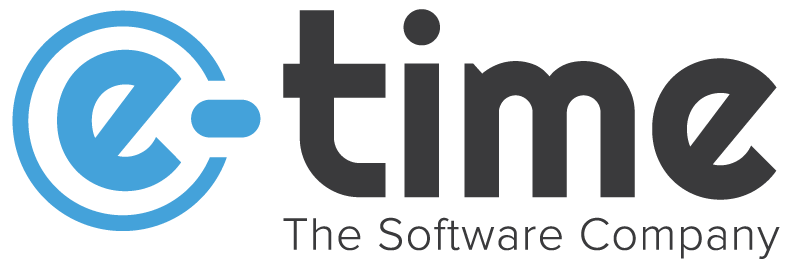E-time | the software company
IT Asset Management – the benefits of having your company’s assets under control
Efficiency and savings. This could be in extreme summary the answer to the question “What are the benefits of IT Asset Management?”, but let’s try to go by points.
Why we talk about IT Asset Management
IT asset management (ITAM) is the set of business practices that join financial, contractual and inventory functions to support life cycle management and strategic decision making for the IT environment. Assets include all elements of software and hardware that are found in the business environment. (def. https://en.wikipedia.org/wiki/IT_asset_management)
With IT Asset Management we indicate all the activities aimed at a correct mapping and management of IT assets (both software and hardware), integrating the different solutions between the various departments with a single macro objective, that of creating value for the company.
Most companies perceive the need to renew technologically and “invest in IT”, but perhaps it is not yet perfectly clear how and perhaps not even why.
The enterprise market is still divided into two broad categories:
- Traditionalist: it’s always been done this way; it’s always worked; now that so many are changing to follow the trend, it frees up space and I’ll be even better off.
- Innovative: the market will always evolve and the only way to compete is to (r)innovate.
Ignoring, or worse, hindering innovation, is like ignoring life.
The world is inexorably accelerating toward valuing ideas.
3D printers, which were in the science fiction dreams of the children of the last century, are now an evolving reality. Always new ideas that require a Time To Market as close to the immediate as possible. The only way to shorten the Time To Market is to use technology, IT.
After the birth of the first portable phones, a phone that could be a computer, a camera, a radio, a TV, etc…, arrived on the market even before the masses could even imagine it. This is an effective Time To Market! We believe that this acceleration will continue and therefore believe in the need to ensure that the IT of all companies is not only adequate and performing, but that it is considered an integral part of the company’s business lines on a par with people; that is, that it is considered on a par with human capabilities.
Man-machine interaction is no longer even to be considered an “innovation”, but a fact.
Why should a manager be entitled to demand the best from his human staff without paying attention to IT resources?
Why are people assigned goals, while IT is asked what it can do to help achieve a goal?
And so why should a company be concerned about getting the most out of each of its Human Resources by seeking them out carefully, putting them in the best possible working conditions, incentivizing them, creating teams that know how to integrate in the best way, etc… and should not give the same attention to IT resources?
The answer is that perhaps you are still trying to put the famous “man with a red flag” in front of man/machine iteration innovation.
IT Asset Management, or rather, IT Governance more generally, shifts the role of IT from “IT Resource” to “Business Resource.” And as a business resource, like a human, it must be managed, valued and evaluated. If, for example, I am willing to spend a total of € for a designer, it is because I have had the opportunity to evaluate his work, through interviews, verification of the projects done, and whatever else, that his work will help to bring “adequate revenues” to the company.
IT Asset Management is the tool that allows me to understand what resources (IT) I need, how my resources (IT) work, how much my resources (IT) really cost, what criticalities/problems my resources (IT) have and whether they give the business the expected contribution in order to bring “adequate revenues”.
It is not uncommon, for example, for companies to set “standards” for IT purchases and for these to be defined by the average technology level in the market.
With adequate information, one could instead, for example, find that such a critical business line is served by certain IT assets for which we could consciously aim for TOP level purchases, while for other less critical business functions, aim for adequate levels saving money and satisfying my critical business much more.
The absence of these procedures sometimes leads to misguided investments that trigger vicious cycles that end up relegating IT to the sad role of “necessary cost” instead of “business investment”. Like human resources, IT investments must be carefully evaluated, measured and examined for the value they provide in terms of ROI.
From these observations, it is easy to see why all companies should incorporate an IT management strategy with a long-term view into their structure in order to strengthen competitiveness in response to market needs.
Who is in charge of it?
Continuing the parallelism between the contribution of HR and IT to the business, as there is an HR Manager who reports directly to top management, the ideal, as many companies have already done, is the establishment of the figure of the Asset Manager. A figure capable of identifying and implementing the strategies necessary to reconcile the needs of the business with those of the IT resources available.
Where this figure is still absent, the IT manager is the most suitable figure to fill the role, provided that he knows how to “raise his head and see the business” with which to work closely.
However, Asset Management should be of equal interest to senior management as other resources (HR) that contribute to the business. On the good health of the assets (HR and IT) depends the profitable administration and overall competitiveness of the whole company.
Benefits of IT Asset Management
As we’ve learned for decades now, a company made up of people who are capable, competent, know how to work as a team, and above all are motivated, brings great benefits. Likewise, an IT:
- capable (match needs/machines);
- competent (analysis of market availability/custom development);
- who works in a “team” (…interconnected to the business);
- motivated (…business objective defined for each IT process) also brings great benefits.
A sound and effective IT Asset Management system consistent with business objectives promises:
- Risk reduction (criticality control and proper calibration of systems).
- Reduction of costs (more efficient management of IT resources through proper management of maintenance or replacement of assets).
- Improved IT performance (load control, mapping of critical paths, etc.).
- Intervention traceability (knowledge of the interrelationships between assets allows the identification of the “criticality” of each planned/proposed intervention and to plan it correctly and without unexpected risks).
- Performance traceability (the effectiveness of the systems is verified as the business grows and possible evolutions are planned)








